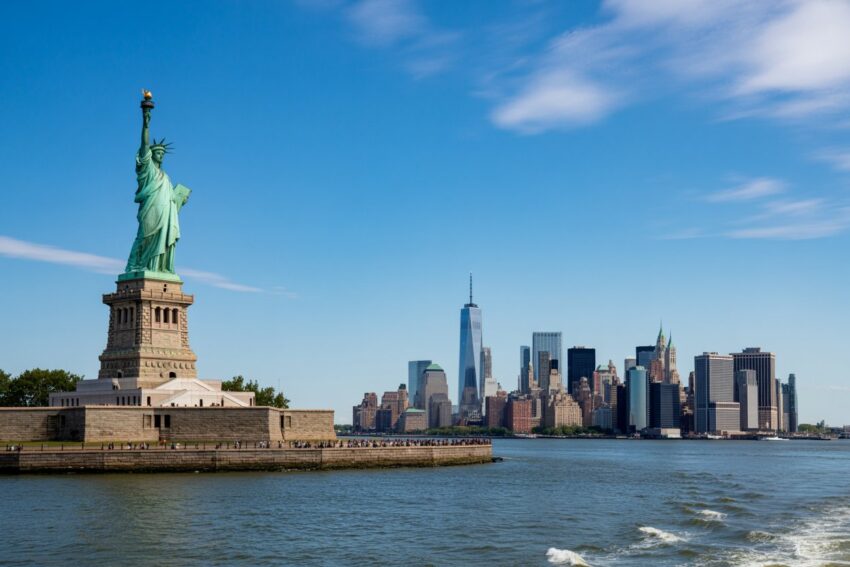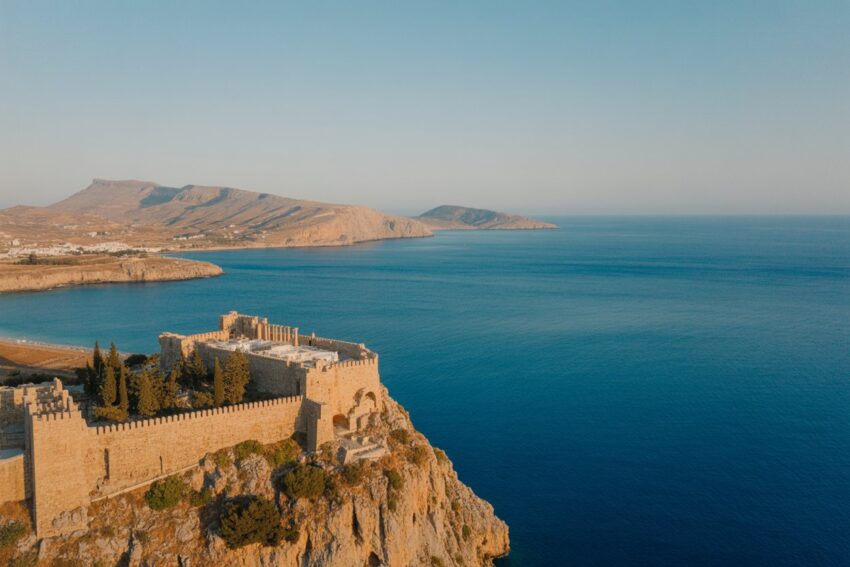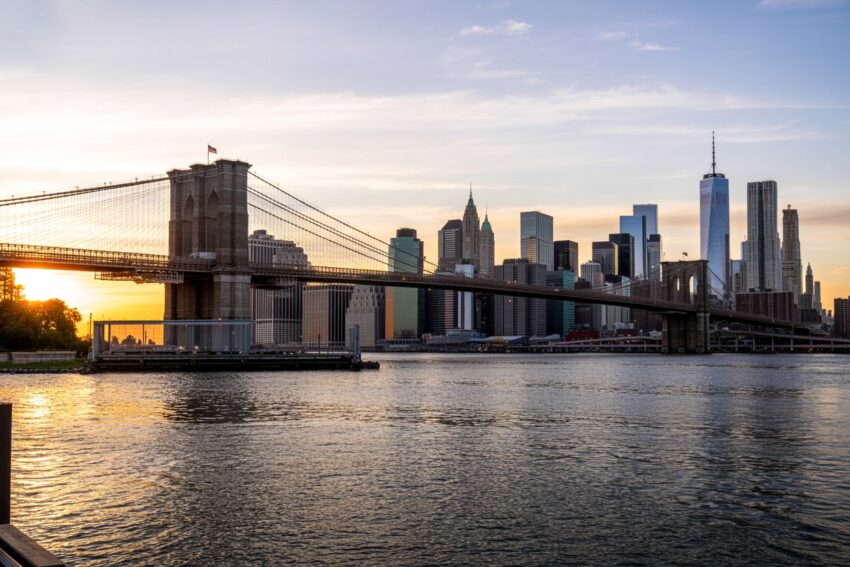
Rhode Island’s tourism soared in 2024 with 29.4 million visitors and $6 billion in spending, driven by strategic marketing, better air access, and rising demand for its coastal charm — placing it alongside New York, California, Tennessee, Illinois, Wyoming, and Montana, which also saw record-breaking tourism growth powered by events, investments, and renewed travel demand across US. Each of these states experienced explosive visitor growth, soaring spending, and new highs in job creation, reflecting a broader U.S. rebound driven by stronger marketing, cultural events, and outdoor travel trends. Rhode Island’s 29.4 million visitors, who spent $6 billion statewide, captured the same momentum that boosted New York’s $94 billion tourism economy and California’s $157 billion spending spree. Together, these states proved that travel demand in America not only recovered but skyrocketed — powered by strategic investments, new attractions, and travelers eager to rediscover both big cities and scenic landscapes.
Rhode Island’s Record Tourism Growth in 2024

Rhode Island’s tourism sector reached record heights in 2024, aligning it with other fast-growing U.S. destinations such as New York, California, Tennessee, Illinois, Wyoming, and Montana. According to new data from Tourism Economics, the Ocean State welcomed 29.4 million visitors, marking a 3.5% increase from 2023. These visitors spent an unprecedented $6 billion, reflecting a 7% jump year-over-year. The total economic impact climbed to $8.8 billion, solidifying tourism’s position as a vital pillar of the state economy. Governor Dan McKee hailed this progress, emphasizing that Rhode Island’s success stemmed from “unprecedented and strategic investments in destination marketing,” helping the state showcase its unique coastal charm, historic towns, and creative culture to a global audience.
Tourism as a Major Job Creator and Economic Force
Tourism’s ripple effect in Rhode Island extended far beyond visitor numbers. In 2024, the industry supported 88,509 jobs, an increase of 2.1%, adding nearly 1,900 new positions compared to the previous year. This accounts for an impressive 13% of all employment in the state, underscoring how travel and hospitality serve as a backbone for local livelihoods. Within that, the food and beverage sector alone employed 31,089 workers, revealing the strong ties between tourism and Rhode Island’s vibrant culinary scene. The sector also generated nearly $992 million in state and local tax revenue, up 5.8% year-on-year — a financial boost that helps fund public services and community infrastructure. Tourism’s growing contribution has not only revitalized small businesses but also reinforced Rhode Island’s status as a dynamic East Coast destination that merges art, dining, and seaside experiences.
Visitor Spending Surge and Strategic Outlook
Visitor spending patterns in 2024 highlighted the diversity of Rhode Island’s tourism appeal. Out of the $6 billion in total expenditures, food and beverage accounted for $1.5 billion (26%), while lodging contributed $1.3 billion (22%), reflecting the strength of both day and overnight travel segments. Air travel spending rose by a striking 11.1%, showcasing the increasing number of tourists arriving by air and the success of state efforts to expand connectivity and promote Rhode Island internationally. The rise in tourism also reflects a broader U.S. trend where smaller states are capturing more attention through creative marketing and experience-driven travel. As Governor McKee noted, “Rhode Island is truly ‘All That’—and the world is taking notice.” With tourism contributing nearly one-seventh of all jobs and billions in economic activity, Rhode Island’s momentum in 2024 places it among the nation’s strongest tourism performers — a testament to its focused strategy, collaborative leadership, and the growing allure of America’s smallest yet strikingly diverse state.
New York’s Record Tourism Year

In 2024, New York emerged as one of the biggest tourism success stories in the United States, recording historic highs in both visitor numbers and spending. According to state tourism data, New York welcomed over 315 million visitors, up from 306.3 million in 2023 — a 2.8% year-over-year increase. Visitor spending also surged to $94 billion, a sharp 6.8% rise from $88 billion the previous year, generating a total economic impact of $145 billion statewide. These achievements secured tourism as New York’s second-largest private-sector employer, supporting around 924,000 jobs, or roughly one in nine workers in the Empire State. This record-setting growth placed New York alongside Rhode Island, California, and Tennessee among the leading U.S. states driving the nation’s tourism rebound in 2024.
What Fueled New York’s Tourism Boom
The state’s tourism momentum was powered by a strong mix of urban magnetism and upstate appeal. New York City, the country’s top international gateway, led the surge with world-renowned attractions like Broadway, the Metropolitan Museum of Art, and the newly revitalized Times Square drawing millions. Meanwhile, Upstate New York benefited from sustained interest in nature and heritage experiences, with destinations such as the Finger Lakes, Adirondacks, and Hudson Valley reporting significant visitor growth. The state’s long-running “I LOVE NY” marketing campaign continued to strengthen its global identity, while a calendar filled with major events — including the 2024 Ryder Cup on Long Island and cultural festivals marking the Erie Canal Bicentennial — brought in additional domestic and international travelers. These efforts, combined with infrastructure upgrades and new hospitality investments, helped position New York as a diverse tourism powerhouse offering something for every traveler.
Record-Breaking Impact Across Sectors
New York’s 2024 tourism boom was felt across multiple sectors. Lodging, dining, retail, and transportation all recorded year-over-year growth, with hotels in New York City reporting high occupancy rates and tourism-driven tax revenues climbing statewide. The growth also reflected the successful comeback of international tourism, which had lagged since the pandemic. Officials credited partnerships between the Empire State Development agency and regional tourism offices for amplifying visibility in overseas markets, particularly in Europe and Asia. Governor Kathy Hochul noted that these results “reflect the global recognition of New York’s unmatched energy, diversity, and cultural richness.” With both urban and rural destinations thriving, New York demonstrated that sustained investment, event-driven tourism, and a focus on visitor experience can deliver record results. The state’s 2024 performance solidified its standing as a leader in the nationwide tourism surge that defined the year.
California’s Tourism Reaches New Heights

California’s tourism industry experienced an extraordinary surge in 2024, reinforcing its role as the most powerful travel economy in the United States. Visitors to the Golden State spent $157.3 billion, up 3% from $152.7 billion in 2023, marking the highest annual total in California’s history. This growth not only set a new benchmark for the state but also made California the #1 U.S. state in total visitor spending. Tourism activity generated an impressive $13 billion in state and local tax revenues and supported over 1.2 million jobs, including 24,000 new positions added in 2024. The figures underscore how California continues to serve as a vital driver in America’s broader tourism recovery, joining Rhode Island, New York, and other states that recorded exceptional performance in 2024.
Global Demand and Event-Driven Recovery
California’s appeal lies in its unparalleled mix of urban energy, natural beauty, and world-class attractions. In 2024, both domestic and international tourism reached new peaks, with Los Angeles, San Diego, and San Francisco welcoming surges in visitors from Asia, Europe, and Latin America. A packed calendar of major events added momentum — from the Super Bowl at SoFi Stadium and the Coachella and Stagecoach music festivals, to the return of global conventions and tech summits across Silicon Valley. The continued success of Disneyland Resort’s Avengers Campus and Universal Studios’ Super Nintendo World further strengthened family travel demand. At the same time, California’s vast landscapes — from Yosemite and Joshua Tree National Parks to the Napa and Sonoma wine valleys — drew millions seeking outdoor escapes. Visit California’s international campaigns and creative “Dream Big” messaging helped revive long-haul tourism, ensuring the state stayed top-of-mind for global travelers.
Tourism as an Engine of Sustainable Growth
Beyond visitor numbers, California’s 2024 tourism growth highlighted a deeper shift toward sustainable and inclusive travel. State tourism leaders emphasized green infrastructure, electric-vehicle accessibility, and local community tourism programs to reduce environmental footprints while expanding visitor experiences. Coastal cities like Santa Barbara and Monterey promoted ocean conservation tours, while mountain towns developed eco-certification programs for lodges and resorts. This evolution helped California attract high-value travelers looking for both adventure and purpose. Although analysts expect the growth rate to moderate slightly in 2025, 2024 firmly positioned California as the largest tourism economy in the nation, with spending that exceeded every other state by tens of billions. From sun-drenched beaches and entertainment hubs to national parks and innovation corridors, California once again proved that its tourism allure remains as diverse and resilient as the state itself.
Tourism Breaks New Records in the Tennessee

Tennessee stood out in 2024 as one of America’s fastest-rising travel destinations, posting its fourth consecutive record year for tourism. The state drew 147 million visits, generating $31.7 billion in direct visitor spending, up 3.3% from 2023. This record surge fueled an estimated $3.3 billion in state and local tax revenue, saving every Tennessee household roughly $1,170. Since 2018, visitor spending in Tennessee has jumped 36.6%, more than double the national growth rate of 17.4% over the same period. These numbers prove how Tennessee, alongside Rhode Island, New York, and California, became a powerhouse of the 2024 U.S. tourism boom—driven by culture, music, and mountain adventures.
Key Drivers of Growth Across the State
Behind the impressive data lies years of focused investment. In 2024 alone, the state issued $1.5 million in marketing grants, $2 million in tourism enhancement funds, and $13.75 million in federal ARPA allocations to strengthen rural and urban attractions alike. These funds revitalized small-town tourism, expanded digital campaigns, and helped local destinations reach new audiences. The Great Smoky Mountains National Park, America’s most visited national park, remained the state’s crown jewel, while Nashville and Memphis attracted millions through their iconic music scenes, festivals, and sports events. Meanwhile, Knoxville, Chattanooga, and Pigeon Forge became regional hubs for family getaways and conventions. Accessibility also improved, with new domestic and international air routes connecting Tennessee to major U.S. and overseas cities.
Governor Bill Lee credited this consistent expansion to Tennessee’s “built-to-last” tourism model—one that emphasizes community involvement, private-public collaboration, and sustained promotion of the state’s authentic culture.
A Tourism Economy Built for the Future
Tennessee’s tourism story in 2024 was about more than numbers; it was about resilience and reinvention. The state turned its cultural heritage into a global attraction—celebrating music legends like B.B. King and gearing up for major anniversaries such as Dollywood’s 40th and the Grand Ole Opry’s 100th. Its entertainment roots, paired with outdoor recreation in the Smokies and the Cumberland Plateau, kept visitor satisfaction and repeat travel high. Analysts noted that Tennessee’s long-term tourism growth far outpaces most U.S. states, proving that consistent funding, creative marketing, and diverse experiences can yield sustained economic gains. As the U.S. tourism industry continues its upward climb, Tennessee stands as a model of how investing in people, place, and purpose can transform a destination into one of the nation’s most thriving travel economies.
Illinois Tourism Reaches Record Highs

Illinois emerged as a standout performer in 2024’s U.S. tourism boom, achieving record-breaking results that underscored its strong recovery and renewed appeal. The state welcomed 113 million domestic and international visitors, who spent an unprecedented $48.5 billion, a rise of $1.3 billion from 2023. That translates to a 2.7% increase in spending and 500,000 more visitors year-over-year. These gains fueled Illinois’ hospitality economy, which directly supported more than 282,000 jobs, up 4,000 positions compared to the previous year. Hotel performance reflected the resurgence — hotel tax revenues hit $367 million, the highest ever recorded, up 14% from the previous record. Chicago, the state’s largest tourism hub, recorded a 7.7% jump in overnight stays, highlighting a full rebound of both leisure and business travel.
Marketing Innovation and Event Tourism Drive Success
Illinois’ 2024 success was no accident — it was built on aggressive marketing and smart investments. The state’s “Middle of Everything” campaign, fronted by actress Jane Lynch, played a decisive role in driving more than 2 million new trips and an extra $675 million in visitor spending, according to Longwoods International. The campaign’s high ROI — every $1 spent yielded $74 in visitor spending and $7 in tax revenue — made it one of the most effective in the nation. Beyond marketing, the state poured funds into attracting major events and developing new tourism assets. More than $7.3 million went toward revitalizing Route 66 attractions ahead of the highway’s 2026 centennial, and a $15 million tourism incentive program helped secure conventions and festivals statewide. Chicago’s vibrant event calendar, from Lollapalooza and the NASCAR street race to a packed convention schedule, drove massive hotel occupancy. Smaller destinations — like Rockford, Springfield, and Galena — also benefited from tourism grants and local promotion, showing that the state’s growth extended beyond Chicago’s city limits.
A Strong Rebound and a Bright Future
By 2024, Illinois had finally surpassed all pre-pandemic benchmarks, transforming from one of the hardest-hit states into a national model for recovery. Officials credited collaboration between the Illinois Office of Tourism and local destination marketing organizations for maintaining a consistent visitor pipeline. Tourism’s impact on communities was tangible — increased jobs, stronger small business revenues, and billions in tax receipts that eased the financial burden on residents. Analysts noted that Illinois’ steady 2–3% annual growth rate may appear modest next to smaller states’ spikes, but its scale makes those figures economically powerful. With the 2025 U.S. Travel Association’s IPW trade show set to take place in Chicago and the Route 66 centennial celebrations on the horizon, Illinois is poised to extend its tourism boom into 2025 and beyond. From the cultural heartbeat of Chicago to the scenic charm of downstate heritage towns, Illinois has proven that strategic marketing and investment can rebuild — and even elevate — a state’s tourism economy.
Wyoming’s Tourism Growth Reaches New Records

Wyoming’s wide-open spaces and world-famous landscapes turned the state into one of America’s standout tourism success stories in 2024. The state welcomed 8.7 million visitors, who spent a record $4.9 billion, reflecting a 1.6% increase in visitor spending from 2023. This marked a full return to pre-pandemic levels and a new all-time high for the Cowboy State’s travel industry. The growth brought a wave of local benefits—tourism directly supported nearly 440 new jobs statewide, reaffirming its vital role in Wyoming’s economy. State officials noted that Wyoming’s resilience and brand strength kept travelers coming back, even as global markets shifted, and that the tourism industry had officially “climbed back to where we were before 2020, and now surpassed it.”
The Power of Nature and National Parks
Wyoming’s appeal remains deeply tied to its natural beauty and outdoor adventure offerings. Teton County, home to Yellowstone National Park and Grand Teton National Park, accounted for more than half of all overnight stays in 2024. Both parks experienced near-record visitation, driving strong demand for hotels, dining, and tours in nearby gateway towns like Jackson Hole and Cody. Beyond the parks, Wyoming’s smaller counties also began reaping tourism dividends thanks to targeted promotion. Communities such as Sweetwater County, known for its Red Desert landscapes, and Buffalo, with its rich Wild West heritage, expanded their tourism marketing through the state’s Destination Development Program. This initiative helps rural towns identify and promote their unique experiences — from rodeos and frontier museums to scenic byways. Wyoming’s Tourism Director, Diane Shober, summed it up best: “Wyoming almost sells itself, but we must keep it in travelers’ consideration sets — our authenticity is our strongest asset.”
Expanding Access and Sustaining Growth
Wyoming’s 2024 tourism boom underscored the balance between expansion and preservation. State tourism authorities emphasized sustainable practices to protect fragile ecosystems while welcoming increasing visitor numbers. Infrastructure improvements around Yellowstone and Grand Teton ensured smoother visitor flow, while local lodges and ranches incorporated eco-friendly hospitality practices to preserve the landscapes that define the state’s appeal. Tourism’s impact now ripples through virtually every corner of Wyoming—from small towns offering outdoor recreation to bustling park gateways catering to global travelers. Although the 1.6% year-over-year growth may appear moderate, it represents a powerful recovery for a small-population state that depends heavily on its natural assets. By aligning conservation with economic development, Wyoming’s tourism model in 2024 became a benchmark for other rural states seeking sustainable yet impactful travel growth.
Montana’s Record Visitor Surge in 2024

Montana’s breathtaking wilderness and open landscapes propelled the state to one of its strongest tourism years ever in 2024, firmly placing it among America’s top-performing destinations. According to data from the University of Montana’s Institute for Tourism and Recreation Research, the state welcomed 13.8 million nonresident visitors — about 1 million more than the previous year, representing a 9% year-over-year increase. Although visitors spent slightly less overall, totaling $5.0 billion (down from $5.5 billion in 2023), this still reflected one of the highest spending years in Montana’s history. The tourism industry supported more than 38,240 jobs across the state — roughly one in every 15 workers — and generated $308 million in state and local taxes, providing critical revenue for public services and infrastructure. The strong rise in visitors cemented Montana’s place alongside states like Rhode Island, California, and Tennessee in fueling the national tourism surge of 2024.
National Park Tourism Leads the Boom
Montana’s tourism strength remains deeply intertwined with its two crown jewels — Glacier National Park and Yellowstone National Park — both of which recorded their second-highest visitation levels ever in 2024. These world-renowned parks attracted millions seeking nature, tranquility, and open space, particularly from nearby U.S. states and Canada. Road trips remained a dominant travel trend, as travelers sought scenic drives along Going-to-the-Sun Road and through Paradise Valley. Beyond the parks, outdoor adventure continued to flourish, with strong participation in hiking, fishing, camping, and skiing. Local tourism organizations promoted lesser-known attractions such as Flathead Lake, Bozeman’s cultural district, and the Little Bighorn Battlefield, helping distribute visitor traffic more evenly across the state. The “Get Lost in Montana” campaign continued to resonate with travelers craving authenticity and space — a message that perfectly matched post-pandemic travel desires for peace, freedom, and connection to nature.
Balancing Growth with Sustainability
While 2024 marked a record year for visitor arrivals, Montana faced new challenges in balancing high tourism volumes with responsible travel management. Analysts noted that despite record footfall, average per-visitor spending fell, suggesting travelers were more budget-conscious, possibly due to inflation or shorter trip durations. However, this did not slow down the state’s long-term tourism momentum — total travel activity remains 28% higher than pre-pandemic levels, underscoring lasting appeal. Tourism leaders are now focusing on spreading visitation into shoulder seasons and promoting cultural and heritage tourism beyond the parks to sustain growth without overwhelming fragile natural ecosystems. With outdoor recreation contributing 4.6% of Montana’s total GDP, one of the highest shares in the nation, tourism has become both an economic lifeline and a stewardship challenge. As Montana looks ahead, its 2024 tourism boom reinforces the state’s identity as “Big Sky Country” — vast, wild, and increasingly central to America’s outdoor travel story.
Rhode Island’s tourism surged in 2024 with 29.4 million visitors and $6 billion in spending, fueled by strategic marketing, improved air connectivity, and rising coastal travel demand—joining New York, California, Tennessee, Illinois, Wyoming, and Montana in leading America’s record-breaking tourism boom.
The 2024 tourism boom proved that America’s travel industry is stronger and more diverse than ever, with Rhode Island standing proudly among the states that led the charge. From its coastal charm and thriving food scene to record visitor spending and job creation, Rhode Island mirrored the success of giants like New York, California, Tennessee, Illinois, Wyoming, and Montana — all driven by smart investments, dynamic events, and a renewed passion for exploration. Together, these states showcased how coordinated marketing, improved infrastructure, and authentic local experiences can transform travel into a powerful force for economic growth. As the nation looks ahead, the surge of 2024 signals not just a comeback, but a new golden era for U.S. tourism built on resilience, creativity, and connection.
The post Rhode Island Unites with New York, California, Tennessee, Illinois, Wyoming, and Montana in Skyrocketing US Tourism Last Year appeared first on Travel And Tour World.from Travel And Tour World https://ift.tt/tuNHU5v
via >EPR


